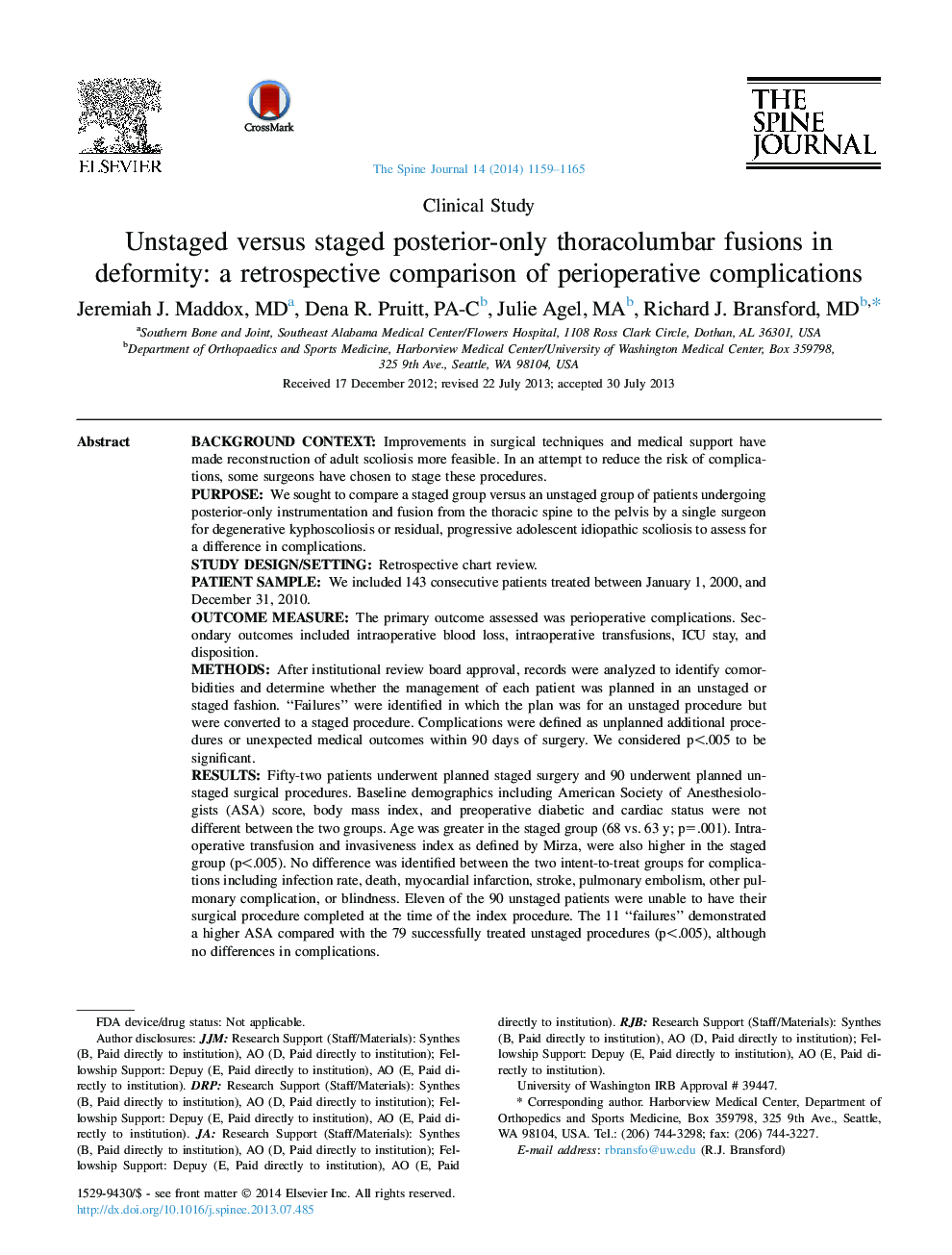| Article ID | Journal | Published Year | Pages | File Type |
|---|---|---|---|---|
| 6212350 | The Spine Journal | 2014 | 7 Pages |
Background contextImprovements in surgical techniques and medical support have made reconstruction of adult scoliosis more feasible. In an attempt to reduce the risk of complications, some surgeons have chosen to stage these procedures.PurposeWe sought to compare a staged group versus an unstaged group of patients undergoing posterior-only instrumentation and fusion from the thoracic spine to the pelvis by a single surgeon for degenerative kyphoscoliosis or residual, progressive adolescent idiopathic scoliosis to assess for a difference in complications.Study design/settingRetrospective chart review.Patient sampleWe included 143 consecutive patients treated between January 1, 2000, and December 31, 2010.Outcome measureThe primary outcome assessed was perioperative complications. Secondary outcomes included intraoperative blood loss, intraoperative transfusions, ICU stay, and disposition.MethodsAfter institutional review board approval, records were analyzed to identify comorbidities and determine whether the management of each patient was planned in an unstaged or staged fashion. “Failures” were identified in which the plan was for an unstaged procedure but were converted to a staged procedure. Complications were defined as unplanned additional procedures or unexpected medical outcomes within 90 days of surgery. We considered p<.005 to be significant.ResultsFifty-two patients underwent planned staged surgery and 90 underwent planned unstaged surgical procedures. Baseline demographics including American Society of Anesthesiologists (ASA) score, body mass index, and preoperative diabetic and cardiac status were not different between the two groups. Age was greater in the staged group (68 vs. 63 y; p=.001). Intraoperative transfusion and invasiveness index as defined by Mirza, were also higher in the staged group (p<.005). No difference was identified between the two intent-to-treat groups for complications including infection rate, death, myocardial infarction, stroke, pulmonary embolism, other pulmonary complication, or blindness. Eleven of the 90 unstaged patients were unable to have their surgical procedure completed at the time of the index procedure. The 11 “failures” demonstrated a higher ASA compared with the 79 successfully treated unstaged procedures (p<.005), although no differences in complications.ConclusionsThere were no differences in complications between the intent-to-treat groups of staged and unstaged procedures, nor was there a difference comparing the “failures” of unstaged care to successful unstaged patients. Although fraught with potential complications, both techniques may be reasonable approaches.
